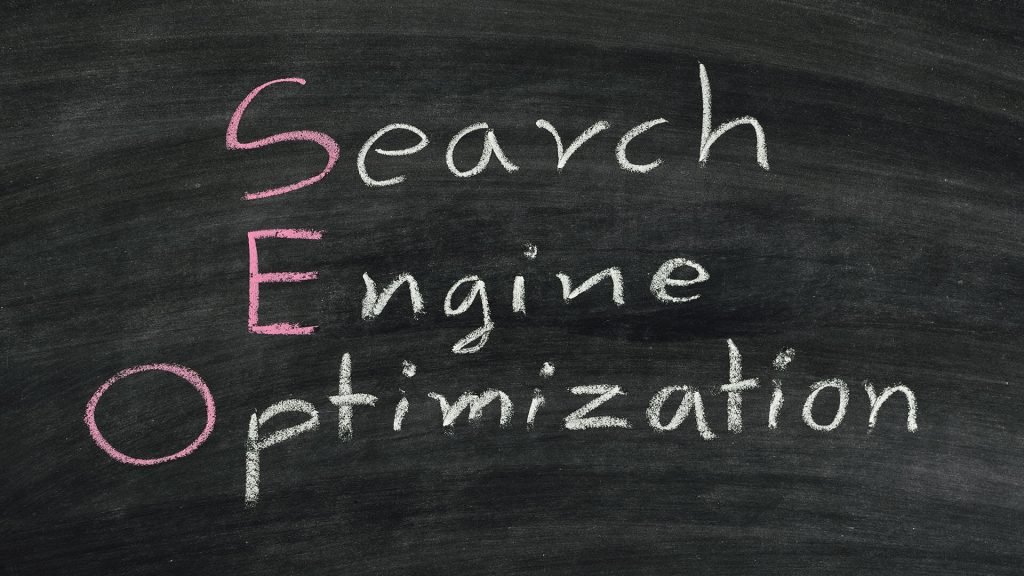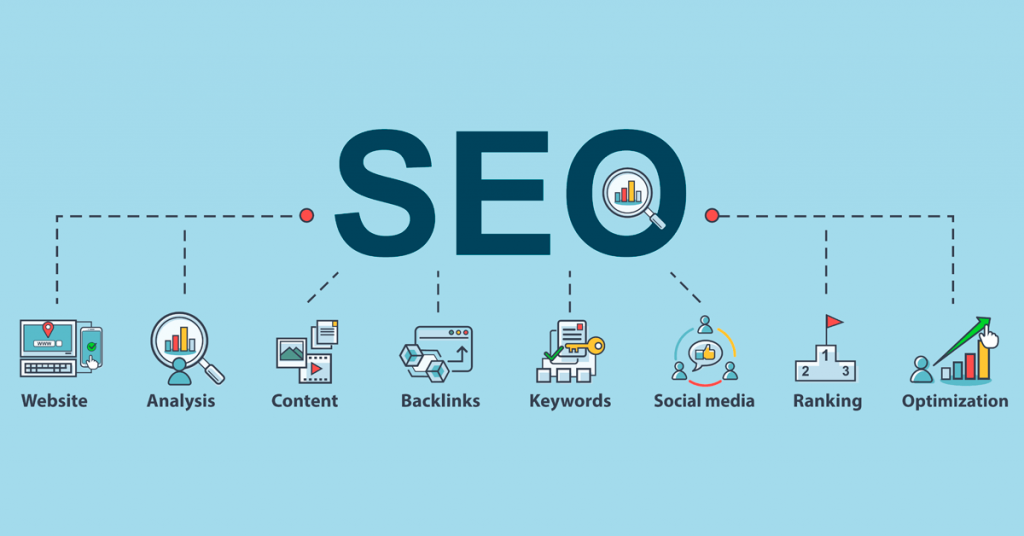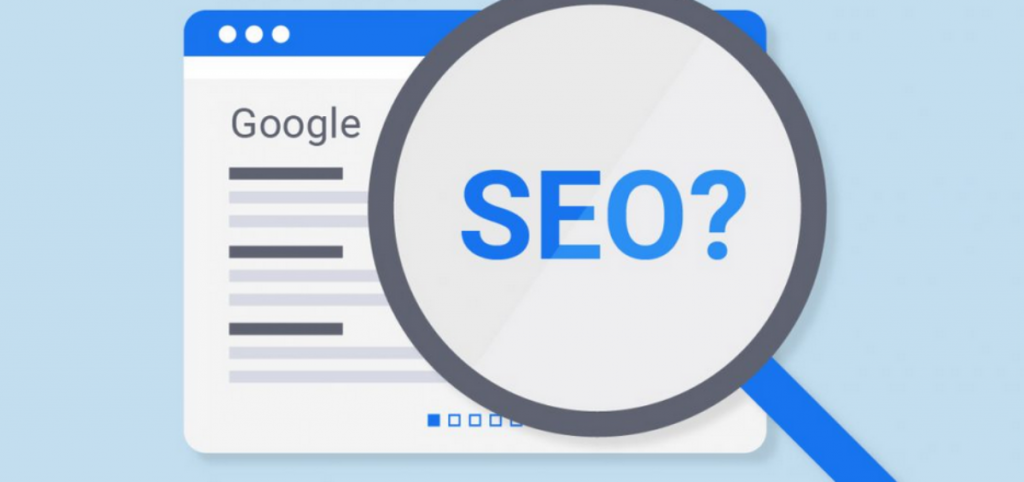If you own, manage, monetize, or promote online content via Google Search, this guide is meant for you. You might be the owner of a growing and thriving business, the website owner of a dozen sites, the SEO specialist in a Web agency or a DIY SEO expert passionate about the mechanics of Search: this guide is meant for you. If you’re interested in having a complete overview of the basics of SEO according to our best practices, you are indeed in the right place. This guide won’t provide any secrets that’ll automatically rank your site first in Google (sorry!), but following the best practices outlined below will hopefully make it easier for search engines to crawl, index and understand your content.
Search engine optimization (SEO) is often about making small modifications to parts of your website. When viewed individually, these changes might seem like incremental improvements, but when combined with other optimizations, they could have a noticeable impact on your site’s user experience and performance in organic search results. You’re likely already familiar with many of the topics in this guide because they’re essential ingredients for any web page, but you may not be making the most out of them.

What is SEO?
SEO stands for “search engine optimization.” It’s the practice of increasing both the quality and quantity of website traffic, as well as exposure to your brand, through non-paid (also known as “organic”) search engine results.
Despite the acronym, SEO is as much about people as it is about search engines themselves. It’s about understanding what people are searching for online, the answers they are seeking, the words they’re using, and the type of content they wish to consume. Knowing the answers to these questions will allow you to connect to the people who are searching online for the solutions you offer.
If knowing your audience’s intent is one side of the SEO coin, delivering it in a way search engine crawlers can find and understand is the other. In this guide, expect to learn how to do both.
You should build a website to benefit your users, and any optimization should be geared toward making the user experience better. One of those users is a search engine, which helps other users discover your content. Search Engine Optimization is about helping search engines understand and present content. Your site may be smaller or larger than our example site and offer vastly different content, but the optimization topics we discuss below should apply to sites of all sizes and types.

Should I hire an SEO professional, consultant, or agency?
Depending on your bandwidth, willingness to learn, and the complexity of your website(s), you could perform some basic SEO yourself. Or, you might discover that you would prefer the help of an expert. Either way is okay!
If you end up looking for expert help, it’s important to know that many agencies and consultants “provide SEO services,” but can vary widely in quality. Knowing how to choose a good SEO company can save you a lot of time and money, as the wrong SEO techniques can actually harm your site more than they will help.
Search engines want to help you succeed. In fact, Google even has a Search Engine Optimization Starter Guide, much like the Beginner’s Guide! They’re also quite supportive of efforts by the SEO community. Digital marketing conferences — such as Unbounce, MNsearch, SearchLove, and Moz’s own MozCon — regularly attract engineers and representatives from major search engines.
Google assists webmasters and SEOs through their Webmaster Central Help Forum and by hosting live office hour hangouts. (Bing, unfortunately, shut down their Webmaster Forums in 2014.)
While webmaster guidelines vary from search engine to search engine, the underlying principles stay the same: Don’t try to trick search engines. Instead, provide your visitors with a great online experience. To do that, follow search engine guidelines and fulfil user intent.
Search engine basics
Search engines are answer machines. They scour billions of pieces of content and evaluate thousands of factors to determine which content is most likely to answer your query.
While paid advertising, social media, and other online platforms can generate traffic to websites, the majority of online traffic is driven by search engines.
Organic search results cover more digital real estate, appear more credible to savvy searchers, and receive way more clicks than paid advertisements. For example, of all US searches, only ~2.8% of people click on paid advertisements.
In a nutshell: SEO has ~20X more traffic opportunities than PPC on both mobile and desktop.
SEO is also one of the only online marketing channels that, when set up correctly, can continue to pay dividends over time. If you provide a solid piece of content that deserves to rank for the right keywords, your traffic can snowball over time, whereas advertising needs continuous funding to send traffic to your site.
Search engines are getting smarter, but they still need our help. Optimizing your site will help deliver better information to search engines so that your content can be properly indexed and displayed within search results.
How do I get my site on Google?
Determine whether your site is in Google’s index: Do a “site: search” for your site’s home URL. If you see results, you’re in the index. For example, a search for “site:google.com” returns these results.

If your site isn’t in Google: Although Google crawls billions of pages, some sites will inevitably be missed. When our crawlers miss a site, it’s frequently for one of the following reasons:
– The site isn’t well connected from other sites on the web
– You’ve just launched a new site and Google hasn’t had time to crawl it yet
– The design of the site makes it difficult for Google to crawl its content effectively
– Google received an error when trying to crawl your site
– Your policy blocks Google from crawling the site
Register your website to Google
Inclusion in Google’s search results is free and easy; you don’t even need to submit your site to Google. Google is a fully automated search engine that uses web crawlers to explore the web constantly, looking for sites to add to our index. In fact, the vast majority of sites listed in our results aren’t manually submitted for inclusion, but found and added automatically when we crawl the web. Learn how Google discovers, crawls, and serves web pages.
We offer webmaster guidelines for building a Google-friendly website. While there’s no guarantee that our crawlers will find a particular site, following these guidelines should help make your site appear in our search results.
Google Search Console provides tools to help you submit your content to Google and monitor how you’re doing in Google Search. If you want, Search Console can even send you alerts on critical issues that Google encounters with your site.
White hat vs black hat SEO
“White hat SEO” refers to SEO techniques, best practices, and strategies that abide by search engine rule, its primary focus to provide more value to people.
“Black hat SEO” refers to techniques and strategies that attempt to spam/fool search engines. While black hat SEO can work, it puts websites at tremendous risk of being penalized and/or de-indexed (removed from search results) and has ethical implications.
Penalized websites have bankrupted businesses. It’s just another reason to be very careful when choosing an SEO expert or Digital Marketing agency.
Do you need an SEO expert?
An SEO expert is someone trained to improve your visibility on search engines. By following this guide, you should learn enough to be well on your way to an optimized site. In addition to that, you may want to consider hiring an SEO professional that can help you audit your pages.
Deciding to hire an SEO is a big decision that can potentially improve your site and save time. Make sure to research the potential advantages of hiring an SEO, as well as the damage that an irresponsible SEO can do to your site. Many SEOs and other agencies and consultants provide useful services for website owners, including:
– Review of your site content or structure
– Technical advice on website development: for example, hosting, redirects, error pages, use of JavaScript
– Content development
– Management of online business development campaigns
– Keyword research
– SEO training
– Expertise in specific markets and geographies
Help Google find your content
The first step to getting your site on Google is to be sure that Google can find it. The best way to do that is to submit a sitemap. A sitemap is a file on your site that tells search engines about new or changed pages on your site. Learn more about how to build and submit a sitemap.
Google also finds pages through links from other pages. Learn how to encourage people to discover your site by Promoting your site. For non-sensitive information, block unwanted crawling by using robots.txt
A robots.txt file tells search engines whether they can access and therefore crawl parts of your site. This file, which must be named robots.txt, is placed in the root directory of your site. It is possible that pages blocked by robots.txt can still be crawled, so for sensitive pages, you should use a more secure method.
# Tell Google not to crawl any URLs in the shopping cart or images in the icons folder, because they won't be useful in Google Search results.
User-agent: googlebot
Disallow: /checkout/
Disallow: /icons/
You may not want certain pages of your site crawled because they might not be useful to users if found in a search engine’s search results. If you do want to prevent search engines from crawling your pages, Google Search Console has a friendly robots.txt generator to help you create this file. Note that if your site uses subdomains and you wish to have certain pages not crawled on a particular subdomain, you’ll have to create a separate robots.txt file for that subdomain.
Help Google (and users) understand your content
Let Google see your page the same way a user does. When Googlebot crawls a page, it should see the page the same way an average user does. For optimal rendering and indexing, always allow Googlebot access to the JavaScript, CSS, and image files used by your website. If your site’s robots.txt file disallows the crawling of these assets, it directly harms how well our algorithms render and index your content. This can result in suboptimal rankings.
Recommended action: Use the URL Inspection tool. It will allow you to see exactly how Googlebot sees and renders your content, and it will help you identify and fix several indexing issues on your site.
Create unique, accurate page titles
A <title> tag tells both users and search engines what the topic of a particular page is. The <title> tag should be placed within the <head> element of the HTML document. You should create a unique title for each page on your site.
Create good titles and snippets in search results
If your document appears on a search results page, the contents of the title tag may appear in the first line of the results (if you’re unfamiliar with the different parts of a Google search result, you might want to check out the anatomy of a search result video).
The title for your homepage can list the name of your website/business and could include other bits of important information like the physical location of the business or maybe a few of its main focuses or offerings.
Accurately describe the page’s content
Choose a title that reads naturally and effectively communicates the topic of the page’s content.
Avoid:
- Choosing a title that has no relation to the content on the page.
- Using default or vague titles like “Untitled” or “New Page 1”.
Create unique titles for each page
Each page on your site should ideally have a unique title, which helps Google know how the page is distinct from the others on your site. If your site uses separate mobile pages, remember to use good titles on the mobile versions too.
Avoid:
- Using a single title across all of your site’s pages or a large group of pages.
- Use brief, but descriptive titles
Titles can be both short and informative. If the title is too long or otherwise deemed less relevant, Google may show only a portion of it or one that’s automatically generated in the search result. Google may also show different titles depending on the user’s query or device used for searching.
Avoid:
- Using extremely lengthy titles that are unhelpful to users.
- Stuffing unneeded keywords in your title tags.
Use the description meta tag
A page’s description meta tag gives Google and other search engines a summary of what the page is about. A page’s title maybe a few words or a phrase, whereas a page’s description meta tag might be a sentence or two or even a short paragraph. Like the <title> tag, the description meta tag is placed within the <head> element of your HTML document.
<html>
<head>
<title>Brandon’s Baseball Cards – Buy Cards, Baseball News, Card Prices</title>
<meta name=”description” content=”Brandon’s Baseball Cards provides a large selection of vintage and modern baseball cards for sale. We also offer daily baseball news and events.”>
</head>
<body>
…
What are the merits of description meta tags?
description meta tags are important because Google might use them as snippets for your pages. Note that we say “might” because Google may choose to use a relevant section of your page’s visible text if it does a good job of matching up with a user’s query. Adding description meta tags to each of your pages is always a good practice in case Google cannot find a good selection of text to use in the snippet. The Google Search Central blog has informative posts on improving snippets with better description meta tags.
Write a description that would both inform and interest users if they saw your description meta tag as a snippet in a search result. While there’s no minimal or maximal length for the text in a description meta tag, we recommend making sure that it’s long enough to be fully shown in Search (note that users may see different sized snippets depending on how and where they search), and contains all the relevant information users would need to determine whether the page will be useful and relevant to them.
Avoid:
- Writing a description meta tag that has no relation to the content on the page.
- Using generic descriptions like “This is a web page” or “Page about baseball cards”.
- Filling the description with only keywords.
- Copying and pasting the entire content of the document into the description meta tag.
Use unique descriptions for each page
Having a different description meta tag for each page helps both users and Google, especially in searches where users may bring up multiple pages on your domain (for example, searches using the site: operator). If your site has thousands or even millions of pages, hand-crafting description meta tags probably aren’t feasible. In this case, you could automatically generate description meta tags based on each page’s content.
Avoid:
- Using a single description meta tag across all of your site’s pages or a large group of pages.
Use heading tags to emphasize important text
Use meaningful headings to indicate important topics, and help create a hierarchical structure for your content, making it easier for users to navigate through your document.
Imagine you’re writing an outline: Similar to writing an outline for a large paper, put some thought into what the main points and sub-points of the content on the page will be and decide where to use heading tags appropriately.
Avoid:
- Placing text in heading tags that wouldn’t help define the structure of the page.
- Using heading tags where other tags like <em> and <strong> may be more appropriate.
- Erratically moving from one heading tag size to another.
Use headings sparingly across the page
Use heading tags where it makes sense. Too many heading tags on a page can make it hard for users to scan the content and determine where one topic ends and another begins.
Avoid:
- Excessive use of heading tags on a page.
- Very long headings.
- Using heading tags only for styling text and not presenting structure.
Add structured data markup
Structured data is code that you can add to your sites’ pages to describe your content to search engines, so they can better understand what’s on your pages. Search engines can use this understanding to display your content in useful (and eye-catching!) ways in search results. That, in turn, can help you attract just the right kind of customers for your business.
For example, if you’ve got an online store and mark up an individual product page, this helps us understand that the page features a bike, its price, and customer reviews. We may display that information in the snippet for search results for relevant queries. We call these rich results.
In addition to using structured data markup for rich results, we may use it to serve relevant results in other formats. For instance, if you’ve got a brick-and-mortar store, marking up the opening hours allows your potential customers to find you exactly when they need you, and inform them if your store is open/closed at the time of searching.
Types of Structured markup
- You can mark up many business-relevant entities:
- Products you’re selling
- Business location
- Videos about your products or business
- Opening hours
- Events listings
- Recipes
- Your company logo, and many more!
We recommend that you use structured data with any of the supported notations markups to describe your content. You can add the markup to the HTML code to your pages, or use tools like Data Highlighter (see the Best Practices section for more information about them).
Check your markup using the Rich Results Test
Once you’ve marked up your content, you can use the Google Rich Results test to make sure that there are no mistakes in the implementation. You can either enter the URL where the content is or copy the actual HTML which includes the markup.
Avoid:
- Using invalid markup.
Use Data Highlighter
If you want to give structured markup a try without changing the source code of your site, you can use Data Highlighter, which is a free tool integrated into Search Console that supports a subset of content types.
If you’d like to get the markup code ready to copy and paste to your page, try the Markup Helper.
Avoid:
- Changing the source code of your site when you are unsure about implementing markup.
Keep track of how your marked-up pages are doing
The various Rich result reports in Search Console shows you how many pages on your site we’ve detected with a specific type of markup, how many times they appeared in search results, and how many times people clicked on them over the past 90 days. It also shows any errors we’ve detected.
Avoid:
- Adding markup data that is not visible to users.
- Creating fake reviews or adding irrelevant markups.
Organize your site hierarchy
Understand how search engines use URLs
Search engines need a unique URL per piece of content to be able to crawl and index that content, and to refer users to it. Different content (for example, different products in a shop), as well as modified content (for example, translations or regional variations), need to use separate URLs to be shown in search appropriately.
URLs are generally split into multiple distinct sections:
protocol://hostname/path/filename?querystring#fragment
Google recommends that all websites use https:// when possible. The hostname is where your website is hosted, commonly using the same domain name that you’d use for email. Google differentiates between the www and non-www version (for example, www.example.com or just example.com). When adding your website to Search Console, we recommend adding both http:// and https:// versions, as well as the www and non-www versions.
Path, filename, and query string determine which content from your server is accessed. These three parts are case-sensitive, so FILE would result in a different URL than file. The hostname and protocol are case-insensitive; the upper or lower case wouldn’t play a role there.
A fragment (in this case, #info) generally identifies which part of the page the browser scrolls to. Because the content itself is usually the same regardless of the fragment, search engines commonly ignore any fragment used.
When referring to the homepage, a trailing slash after the hostname is optional since it leads to the same content (https://example.com/ is the same as https://example.com). For the path and filename, a trailing slash would be seen as a different URL (signalling either a file or a directory), for example, https://example.com/fish is not the same as https://example.com/fish/.
Navigation is important for search engines
The navigation of a website is important in helping visitors quickly find the content they want. It can also help search engines understand what content the website owner thinks is important. Although Google’s search results are provided at a page level, Google also likes to have a sense of what role a page plays in the bigger picture of the site.
Plan your navigation based on your homepage
All sites have a home or root page, which is usually the most frequented page on the site and the starting place of navigation for many visitors. Unless your site has only a handful of pages, you should think about how visitors will go from a general page (your root page) to a page containing more specific content. Do you have enough pages around a specific topic area that it would make sense to create a page describing these related pages (for example, root page -> related topic listing -> specific topic)? Do you have hundreds of different products that need to be classified under multiple category and subcategory pages?
Using breadcrumb lists
A breadcrumb is a row of internal links at the top or bottom of the page that allows visitors to quickly navigate back to a previous section or the root page. Many breadcrumbs have the most general page (usually the root page) as the first, leftmost link and list the more specific sections out to the right. We recommend using breadcrumb structured data markup when showing breadcrumbs.
Create a simple navigational page for users
A navigational page is a simple page on your site that displays the structure of your website and usually consists of a hierarchical listing of the pages on your site. Visitors may visit this page if they are having problems finding pages on your site. While search engines will also visit this page, getting good crawl coverage of the pages on your site, it’s mainly aimed at human visitors.
Create a naturally flowing hierarchy
Make it as easy as possible for users to go from general content to the more specific content they want on your site. Add navigation pages when it makes sense and effectively works these into your internal link structure. Make sure all of the pages on your site are reachable through links, and that they don’t require an internal search functionality to be found. Link to related pages, where appropriate, to allow users to discover similar content.
Avoid:
- Creating complex webs of navigation links, for example, linking every page on your site to every other page.
- Going overboard with slicing and dicing your content (so that it takes twenty clicks to reach from the homepage).
Use text for navigation
Controlling most of the navigation from page to page on your site through text links makes it easier for search engines to crawl and understand your site. When using JavaScript to create a page, use an element with URLs as href attribute values, and generate all menu items on page-load, instead of waiting for user interaction.
Avoid:
- Having a navigation based entirely on images, or animations.
- Requiring script or plugin-based event-handling for navigation.
Use words in URLs
URLs with words that are relevant to your site’s content and structure are friendlier for visitors navigating your site.
Avoid:
- Using lengthy URLs with unnecessary parameters and session IDs.
- Choosing generic page names like page1.html.
- Using excessive keywords like baseball-cards-baseball-cards-baseballcards.html.
Create a simple directory structure
Use a directory structure that organizes your content well and makes it easy for visitors to know where they’re at on your site. Try using your directory structure to indicate the type of content found at that URL.
Avoid:
- Having deep nesting of subdirectories like …
/dir1/dir2/dir3/dir4/dir5/dir6/page.html. - Using directory names that have no relation to the content in them.
- Provide one version of a URL to reach a document
To prevent users from linking to one version of a URL and others linking to a different version (this could split the reputation of that content between the URLs), focus on using and referring to one URL in the structure and internal linking of your pages. If you do find that people are accessing the same content through multiple URLs, setting up a 301 redirect link element if you cannot redirect.
Avoid:
- Having pages from subdomains and the root directory access the same content, for example, domain.com/page.html and sub.domain.com/page.html.
Optimize your content

Make your site interesting and useful. Creating compelling and useful content will likely influence your website more than any of the other factors discussed here. Users know good content when they see it and will likely want to direct other users to it. This could be through blog posts, social media services, email, forums, or other means.
Organic or word-of-mouth buzz is what helps build your site’s reputation with both users and Google, and it rarely comes without quality content.
Know what your readers want (and give it to them)
Think about the words that a user might search for to find a piece of your content. Users who know a lot about the topic might use different keywords in their search queries than someone new to the topic. For example, a long-time football fan might search for [fifa], an acronym for the Fédération Internationale de Football Association, while a new fan might use a more general query like [football playoffs]. Anticipating these differences in search behaviour and accounting for them while writing your content (using a good mix of keyword phrases) could produce positive results. Google Ads provides a handy Keyword Planner.
Consider creating a new, useful service that no other site offers. You could also write an original piece of research, break an exciting news story, or leverage your unique user base. Other sites may lack the resources or expertise to do these things.
Write easy-to-read text
Users enjoy the content that is well written and easy to follow.
Avoid:
- Writing sloppy text with many spelling and grammatical mistakes.
- Awkward or poorly written content.
- Embedding text in images and videos for textual content: users may want to copy and paste the text and search engines can’t read it.
Organize your topics clearly
It’s always beneficial to organize your content so that visitors have a good sense of where one content topic begins and the other ends. Breaking your content up into logical chunks or divisions helps users find the content they want faster.
Avoid:
- Dumping large amounts of text on varying topics onto a page without paragraph, subheading, or layout separation.
- Create fresh, unique content
New content will not only keep your existing visitor base coming back but also bring in new visitors.
Avoid:
- Rehashing (or even copying) existing content will bring little extra value to users.
- Having duplicate or near-duplicate versions of your content across your site.
Optimize content for your users, not search engines
Designing your site around your visitors’ needs while making sure your site is easily accessible to search engines usually produces positive results.
Avoid:
- Inserting numerous unnecessary keywords aimed at search engines but are annoying or nonsensical to users.
- Having blocks of text like “frequent misspellings used to reach this page” that add little value for users.
- Deceptively hiding text from users, but displaying it to search engines.
Write good internal link text
Link text is the visible text inside a link. This text tells users and Google something about the page you’re linking to. Links on your page may be internal—pointing to other pages on your site—or external—leading to content on other sites. In either of these cases, the better your anchor text is, the easier it is for users to navigate and for Google to understand what the page you’re linking to is about.
With appropriate anchor text, users and search engines can easily understand what the linked pages contain.
Choose descriptive text
The anchor text you use for a link should provide at least a basic idea of what the page linked to is about.
Avoid:
- Writing generic anchor text like “page”, “article”, or “click here”.
- Using text that is off-topic or has no relation to the content of the page linked to.
- Using the page’s URL as the anchor text in most cases, although there are certainly legitimate uses of this, such as promoting or referencing a new website’s address.
Write concise text
Aim for short but descriptive text-usually a few words or a short phrase.
Avoid:
- Writing long anchor text, such as a lengthy sentence or short paragraph of text.
- Format links so they’re easy to spot
- Make it easy for users to distinguish between regular text and the anchor text of your links. Your content becomes less useful if users miss the links or accidentally click them.
- Using CSS or text styling that makes links look just like regular text.
- Think about anchor text for internal links too
You may usually think about linking in terms of pointing to outside websites, but paying more attention to the anchor text used for internal links can help users and Google navigate your site better.
Avoid:
- Using excessively keyword-filled or lengthy anchor text just for search engines.
- Creating unnecessary links that don’t help with the user’s navigation of the site.
Optimize your images
- Use HTML images
- Use HTML image elements to embed images in your content.
- Use the HTML
<img>or<picture>elements
Semantic HTML markup helps crawlers find and process images. By using the <picture> element you can also specify multiple options for different screen sizes for responsive images. You might also use the loading=”lazy” attribute on images to make your page load faster for your users.
Use the alt attribute
Provide a descriptive filename and alt attribute description for images. The alt attribute allows you to specify alternative text for the image if it cannot be displayed for some reason.
Why use this attribute? If a user is viewing your site using assistive technologies, such as a screen reader, the contents of the alt attribute provide information about the picture.
Another reason is that if you’re using an image as a link, the alt text for that image will be treated similarly to the anchor text of a text link. However, we don’t recommend using too many images for links in your site’s navigation when text links could serve the same purpose. Lastly, optimizing your image filenames and alt text makes it easier for image search projects like Google Images to better understand your images.
Use brief but descriptive filenames and alt text
Like many of the other parts of the page targeted for optimization, filenames and alt text are best when they’re short but descriptive.
Avoid:
- Using generic filenames like image1.jpg, pic.gif, 1.jpg when possible—if your site has thousands of images you might want to consider automating the naming of the images.
- Writing extremely lengthy filenames.
- Stuffing keywords into alt text or copying and pasting entire sentences.
- Supply alt text when using images as links
If you do decide to use an image as a link, filling out its alt text helps Google understand more about the page you’re linking to. Imagine that you’re writing anchor text for a text link.
Avoid:
- Writing excessively long alt text that would be considered spammy.
- Using only image links for your site’s navigation.
Make your site mobile-friendly
The world is mobile today. Most people are searching on Google using a mobile device. The desktop version of a site might be difficult to view and use on a mobile device. As a result, having a mobile-ready site is critical to your online presence. In fact, starting in late 2016, Google has begun experiments to primarily use the mobile version of a site’s content for ranking, parsing structured data, and generating snippets.
Understand the difference between devices
Smartphone – In this document, “mobile” or “mobile devices” refers to smartphones, such as devices running Android, iPhone, or Windows Phone. Mobile browsers are similar to desktop browsers in that they can render a broad set of the HTML5 specification, although their screen size is smaller and in almost all cases their default orientation is vertical.
Tablet – We consider tablets as devices in their own class, so when we speak of mobile devices, we generally do not include tablets in the definition. Tablets tend to have larger screens, which means that, unless you offer tablet-optimized content, you can assume that users expect to see your site as it would look on a desktop browser rather than on a smartphone browser.
Multimedia phone – These are phones with browsers that can render pages coded to meet XHTML standards, support HTML5 Markup, JavaScript/ECMAScript but might not support some of the extension APIs in the HTML5 standard. This generally describes the browser in most 3G-ready phones that are not smartphones.
Feature phones – On these phones, browsers lack the capability to render normal desktop web pages coded using standard HTML. This includes browsers that render only cHTML (iMode), WML, XHTML-MP, etc.
Our recommendations are geared toward smartphones, but we encourage multimedia and feature phones site owners to follow the same advice where they feel appropriate.
Choose a mobile strategy
There are multiple ways of making your website mobile-ready and Google supports different implementation methods :
- Responsive web design (Recommended)
- Dynamic serving
Separate URLs
After you have created a mobile-ready site, you can use Google’s Mobile-Friendly Test to fix mobile usability issues affecting your site.
If your site serves lots of static content (like blog posts or product landing pages) across multiple pages, consider implementing it using AMP (Accelerated Mobile Pages). It’s a special flavour of HTML that ensures your site stays fast and user friendly and can be further accelerated by various platforms, including Google Search.
Configure mobile sites so that they can be indexed accurately
Regardless of which configuration you choose to set up your mobile site, there are key points that you should take note of:
If you use Dynamic Serving or have a separate mobile site, signal to Google when a page is formatted for mobile (or has an equivalent page that’s formatted for mobile). This helps Google accurately serve mobile searchers your content in search results.
If you are using Responsive Web Design, use the meta name="viewport" tag to tell the browser how to adjust the content. If you use Dynamic Serving, use the Vary HTTP header to signal your changes depending on the user agent. If you are using separate URLs, signal the relationship between two URLs by adding the <link> tag with rel="canonical" and rel="alternate" elements to the page.
Keep resources crawlable
Blocking page resources can give Google an incomplete picture of your website. This often happens when your robots.txt file is blocking access to some or all of your page resources. If Googlebot doesn’t have access to a page’s resources, such as CSS, JavaScript, or images, we may not detect that it’s built to display and work well on a mobile browser. In other words, we may not detect that the page is mobile-friendly, and therefore not properly serve it to mobile searchers.
Avoid common mistakes that frustrate mobile visitors, such as featuring unplayable videos.
Mobile pages that provide a poor searcher experience can be demoted in rankings or displayed with a warning in mobile search results. This includes but is not limited to full page interstitials on mobile that hinders user experience.
Provide full functionality on all devices. Mobile users expect the same functionality—such as commenting and check-out—and content on mobile as well as on all other devices that your website supports. In addition to textual content, make sure that all-important images and videos are embedded and accessible on mobile devices. For search engines, provide all structured data and other metadata—such as titles, descriptions, link elements, and other meta-tags—on all versions of the pages.
Make sure that the structured data, images, videos, and metadata you have on your desktop site are also included on the mobile site.
Best Practices
Test your mobile pages with the Mobile-Friendly Test to see if Google thinks your website works well on mobile devices.
If you use separate URLs for your mobile pages, make sure to test both the mobile and the desktop URLs, so you can confirm that the redirect is recognized and crawlable.
Promote your website
While most of the links to your site will be added gradually, as people discover your content through search or other ways and link to it, Google understands that you’d like to let others know about the hard work you’ve put into your content. Effectively promoting your new content will lead to faster discovery by those who are interested in the same subject. As with most points covered in this document, taking these recommendations to an extreme could actually harm the reputation of your site.
A blog post on your own site letting your visitor base know that you added something new is a great way to get the word out about new content or services. Other website owners who follow your site or RSS feed could pick the story up as well.
Putting effort into the offline promotion of your company or site can also be rewarding. For example, if you have a business site, make sure its URL is listed on your business cards, letterhead, posters, etc. You could also send out recurring newsletters to clients through the mail letting them know about new content on the company’s website.
If you run a local business, adding its information to Google My Business will help you reach customers on Google Maps and Google Search.
Promote your website on social media
Sites built around user interaction and sharing have made it easier to match interested groups of people up with relevant content.
Avoid:
- Attempting to promote each new, small piece of content you create; go for big, interesting items.
- Involving your site in schemes where your content is artificially promoted to the top of these services.














Comments are closed.